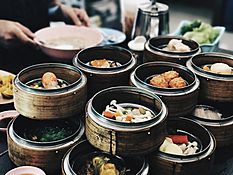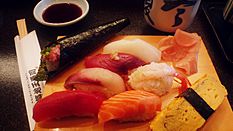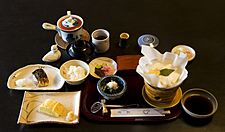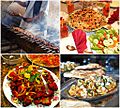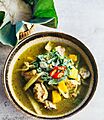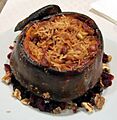List of Asian cuisines facts for kids
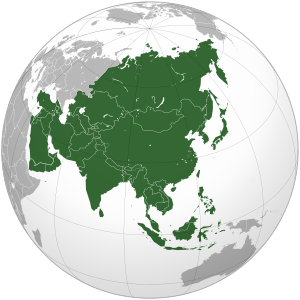
A cuisine is a special way of cooking food. It includes the cooking styles and traditions of a certain culture or area. Asia is the biggest continent, with the most people and many different cultures. Because of this, Asia has a huge variety of cuisines!
Contents
Central Asian Food
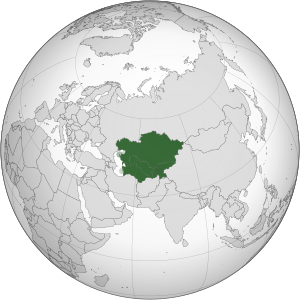
Central Asian food comes from countries like Kazakhstan, Kyrgyzstan, Tajikistan, Turkmenistan, and Uzbekistan.
- Kazakh food uses a lot of mutton (sheep meat) and horse meat. They also use many milk products. For a long time, Kazakhs were herders, meaning they raised animals for food, clothes, and travel.
- Kazakh wine is also made here.
- Kyrgyz food is very similar to Kazakh food. It also uses mutton, horse meat, and milk products. Their cooking styles are shaped by their history of living as nomads, moving from place to place.
- Tajik food is like Afghan, Russian, and Uzbek food. Their national dish is Plov (also called osh). It's made with chunks of mutton, carrots, and rice, cooked in a big pot. Green tea is their national drink. Tajik meals often start with dried fruit, nuts, and sweets, then soup and meat, and finish with plov.
- Turkmen food is similar to other Central Asian cuisines. Plov is a main food for everyday meals and celebrations. Turkmenistan is famous for its melons. Meals almost always include "çörek," which is a Central Asian flat bread.
- Uzbek food is influenced by local farming. Since a lot of grain is grown, bread and noodles are very important. Mutton is a popular meat. Uzbekistan's special dish is palov (osh), made with rice, meat, grated carrots, and onions.
East Asian Food
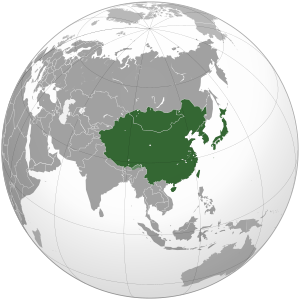
East Asian food often uses oils, fats, and sauces when cooking.
- Chinese food has many different styles based on regions in China. The most famous and important styles are Sichuan, Shandong, Jiangsu, and Guangdong. These styles are different because of the local ingredients, climate, history, and cooking methods. Many traditional Chinese foods use ways to keep food fresh, like drying, salting, and pickling.
- Chinese food started with what are called the Eight Great Traditions. Northern styles often use strong flavors like vinegar and garlic. Southern styles prefer fresh ingredients that are cooked lightly. Chinese food is popular all over the world.
- Wine in China is also part of the culture.
- Some of the Great Traditions include:
- Anhui cuisine uses wild herbs from land and sea, cooked simply.
- Cantonese cuisine from southern China uses a lot of fresh seafood because it's on the coast.
- Fujian cuisine uses many different seafoods and forest foods like edible mushrooms.
- Hunan cuisine is known for its hot and spicy flavors.
- Jiangsu cuisine focuses on soft textures and beautiful colors.
- Shandong cuisine is famous for its vinegar.
- Sichuan cuisine is known for bold, spicy flavors from garlic, chili peppers, and Sichuan peppercorns.
- Zhejiang cuisine is not greasy and has a fresh, soft taste.
- Hong Kong food is mostly influenced by Cantonese food, but also by other Chinese styles, Japan, and Southeast Asia. This is because Hong Kong was a British colony and a big trading city. Fish balls, wonton noodle, and milk tea are popular.
- Japanese food is known for using fresh, seasonal ingredients and beautiful presentation. Sushi and sashimi are famous dishes. Japanese cities have received more Michelin stars (awards for great restaurants) than any other country!
- Traditional Japanese cooking doesn't use much oil or fat. It focuses on the natural flavors of the ingredients. Because Japan is an island, they have lots of seafood.
- Japanese wine is also produced.
- Okinawan food is different from mainland Japanese food due to its unique culture, climate, and ingredients. It has influences from Chinese and Southeast Asian food because of trade. The sweet potato became a main food there for a long time.
- Korean food comes from old traditions in the Korean peninsula. It uses a lot of rice, vegetables, and meats. Korean meals are known for having many side dishes called banchan with rice. Kimchi is served very often. Common ingredients include sesame oil, fermented bean paste, soy sauce, garlic, and pepper flakes.
- Korean barbecue, or gogi gui, is a popular way to grill meat at the table.

-
- Korean traditional liquor makgeolli is made from rice. It tastes a bit savory and sweet, and it's popular in South Korea.
- Mongolian food is shaped by the very cold climate. It mainly uses dairy products, meat, and animal fats. They don't use many vegetables or spices.
- Taiwanese food is mostly from the Han Taiwanese people, but it also has some Japanese influence because Japan ruled Taiwan for a time.
North Asian Food
North Asian food includes the cuisines of people in the Asian part of Russia. These foods often have features from Turkic and Mongolian cuisines.
- Russian cuisine is the main influence here.
- Some regional foods include Buryat cuisine and Sakha cuisine.
South Asian Food
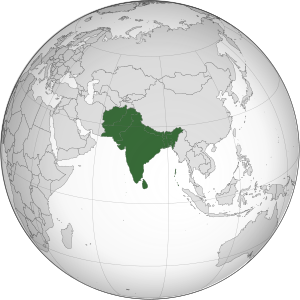
South Asian cuisine comes from the Indian subcontinent. It includes traditions from Hindu beliefs and influences from the Middle East and Central Asia. Dishes here are known for using hot peppers, black pepper, cloves, and other strong spices, along with flavored butter called ghee. Common meats are lamb, goat, and chicken. Beef is not common because of Hindu beliefs. Rice, chapati (flatbread), and beans are also main foods.
Naan, a type of flat bread, is a common part of meals in many parts of South Asia.
- Afghan food is mostly based on crops like wheat, maize, barley, and rice. They also use dairy products, nuts, vegetables, and fruits. Lamb is the main meat. Afghanistan is also known for its grapes.
- Bangladeshi food is mostly Bengali cuisine. It's shaped by the country's history and many rivers. Rice is the main food, served with many different curries. Bangladeshi dishes have strong smells and often include eggs, potatoes, and aubergines. They use many spices and herbs, with mustard oil and ghee. Fish is a very important food, especially freshwater fish.
- Bhutanese food uses a lot of red rice, buckwheat, and maize. They also eat chicken, yak meat, dried beef, pork, and mutton.
- Indian food is known for its smart use of many spices, vegetables, and fruits. Many people in India are vegetarians. Indian food changes a lot from region to region. India's religious beliefs and culture have played a big part in how its food developed. Indian food has also been influenced by the Middle East, Southeast Asia, and Central Asia.
- There are many regional styles, like:
- North Indian cuisines including Punjabi cuisine and Mughlai cuisine.
- South Indian cuisines like Kerala cuisine and Tamil cuisine.
- East Indian cuisines like Bengali cuisine, which has many influences from trade.
- West Indian cuisines like Maharashtrian cuisine and Goan cuisine.
- There are many regional styles, like:
- Maldivian food is from the Maldives.
- Nepalese food is from Nepal.
- Pakistani food has many regional styles, including Balochi cuisine, Punjabi cuisine, and Sindhi cuisine.
- Sri Lankan food is from Sri Lanka.
Southeast Asian Food
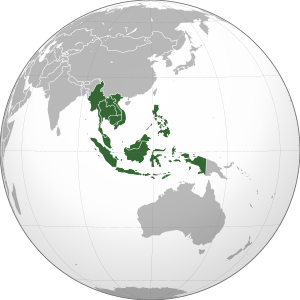
Southeast Asian food often has dishes that are lightly cooked but have strong smells. They use flavors like lemongrass, fermented fish sauce, and ginger. Unlike East Asian food, they use fish sauces instead of soy sauce and include ingredients like galangal and tamarind. Cooking methods include stir frying, boiling, and steaming.
- Bruneian food is similar to Malaysian, Singaporean, and Indonesian food, with influences from China, India, and Arab countries.
- Burmese food (from Myanmar) is influenced by China, India, and Thailand. Burmese people often eat with their right hand, forming rice into a small ball. They eat many vegetables, fruits, and meats.
- Cambodian food has taken ideas from Indian, Chinese, and French cooking. It shares many similarities with Thai, Vietnamese, and Lao foods.
- Filipino food has changed over many centuries. It started with Austronesian origins and now mixes Hispanic, Chinese, American, and other Asian influences. One famous dish is sisig.
- Bicol food is known for spicy dishes and those made with coconut milk, like Bicol Express.
- Visayan food from the central islands has many seafood and land products. Examples include Lechon (roasted pig) and La Paz batchoy (noodle soup).
- Indonesian food is very diverse because Indonesia has about 6,000 islands where people live. Many regional foods exist, often based on cultural and foreign influences. For example, Sumatran food often has Middle Eastern and Indian influences, while Javanese food is more local.
- Laotian food is different from other Southeast Asian cuisines. It has influenced the food of Northeastern Thailand and parts of Cambodia.
- Malaysian food shows the many cultures in Malaysia: Malay, Chinese, and Indian, plus other ethnic groups. It also has influences from Thai, Indonesian, Filipino, British, Dutch, and Portuguese cooking.
- Malay cuisine has many regional and foreign influences.
- Malaysian Chinese cuisine mixes Chinese cooking with local ingredients.
- Malaysian Indian cuisine mixes Indian cooking with local ingredients.
- Singaporean food is very similar to Malaysian food due to their shared history. The main foods are Chinese, Malay, Indian, and English.
- Thai food has four main regional cuisines: Northern, Northeastern (Isan), Central, and Southern. Each is similar to foods in nearby countries.
- Vietnamese food is influenced by Chinese and French cooking. Fish sauce, soy sauce, rice, fresh herbs, fruits, and vegetables are common. Vietnamese recipes use many herbs like lemongrass and mint.
West Asian Food

West Asian cuisine is the food of different countries and people in West Asia. Even with similarities, there are big differences in climate and culture. Many West Asian dishes use a paste called tahini, made from sesame seeds. It's used in popular appetizers like baba ghanoush and hummus. Hummus is made from chickpeas, which are a main food. Common ingredients include olives and olive oil, lamb, pitas, honey, and many spices. Popular dishes include kibbeh and shawarma.
- Arab cuisine of the Persian Gulf mixes Levantine, Indian, Chinese, and Persian cooking styles.
- Bahraini food is from the island of Bahrain. It imports most of its food but grows dates, bananas, and citrus fruits.
- Egyptian food is from Egypt.
- Iranian food (Persian cuisine) is diverse, with each area having its own dishes.
- Iraqi food has a long history, going back 10,000 years to the Sumerians and Babylonians. Old tablets found in Iraq show recipes, which might be the world's first cookbooks!
- Kuwaiti food has a national dish called machboos, made with mutton or chicken mixed with rice.
- Omani food is usually simple, using many spices and marinades. It often has chicken, fish, and mutton. Unlike many Asian foods, Omani food is not very spicy.
- Saudi Arabian food staples include lamb, grilled chicken, falafel (fried chickpea balls), and shawarma. Arabic flatbread, or khobz, is eaten with almost all meals.
- Kabsa is often seen as Saudi Arabia's national dish.
- Turkish food comes from Ottoman cuisine, which mixed Central Asian, West Asian, and Balkan foods. Turkish food has also influenced other nearby cuisines.
- Yemeni food has many common dishes like Mandi, which is made from meat, basmati rice, and spices.
- Levantine cuisine is the traditional food of the Levant region. This area shared many cooking traditions under the Ottoman Empire. It includes modern countries like Syria, Palestine, Lebanon, and Jordan.
- Palestinian food includes foods commonly eaten by Palestinians.
- Israeli food mixes dishes brought by Jews from around the world, those from Jews who stayed in the region, and foods adopted from Arab neighbors.
- Jordanian food is from Jordan.
- Lebanese food uses lots of starches, fruits, vegetables, and fresh fish. Chicken is eaten more than red meat.
- Syrian food is a mix of cultures that settled in Syria, especially Arab, Persian, and Turkish influences.
- South Caucasus cuisine is the food of countries like Armenia, Azerbaijan, and Georgia.
Images for kids
-
Horse meat platter. Kazakh cuisine uses mutton, horse meat and various milk products.
-
A Tajik feast.
-
Sturgeon kebabs cooking in Turkmenistan.
-
Guangdong is on the coast, so fresh live seafood is a specialty in Cantonese cuisine.
-
Sichuan cuisine – A Chengdu-style, hot-pot stew.
-
Some popular Afghan dishes: 1. Lamb grilled kebab; 2. Kabuli palaw and salad; 3. Tandoori chicken; and 4. Mantu (dumplings).
-
Traditional Bangladeshi meal: mustard seed ilish curry, Dhakai biryani and pitha.
-
South Indian style vegetarian thali (a plate with various dishes).
-
North Indian style vegetarian thali.
-
Pork vindaloo is a popular curry dish from the Indian state of Goa.
-
A serving of Nasi Bali, in Indonesia, with rice and side dishes like sate lilit.
-
Philippine adobo is a popular Filipino dish.
-
Malaysian nasi lemak, served with anchovies, peanuts, boiled egg, lamb curry, cucumber, and sambal.
-
Food stall in Chiang Mai, Thailand selling ready-cooked food.
-
Bò 7 món (meaning "seven courses of beef" in Vietnamese) is a set of beef dishes in Vietnamese cuisine.
-
Hummus with pine nuts at the Maxim restaurant in Haifa, Israel.
-
Chicken Fesenjān with Persian rice, an Iranian dish.
-
Falafel balls.
-
Doner kebab, Istanbul, Turkey.
-
Adjarian Khachapuri from Georgia.
-
Armenian Ghapama made with butternut squash.
-
Light snacks of Azerbaijani cuisine.
See also


